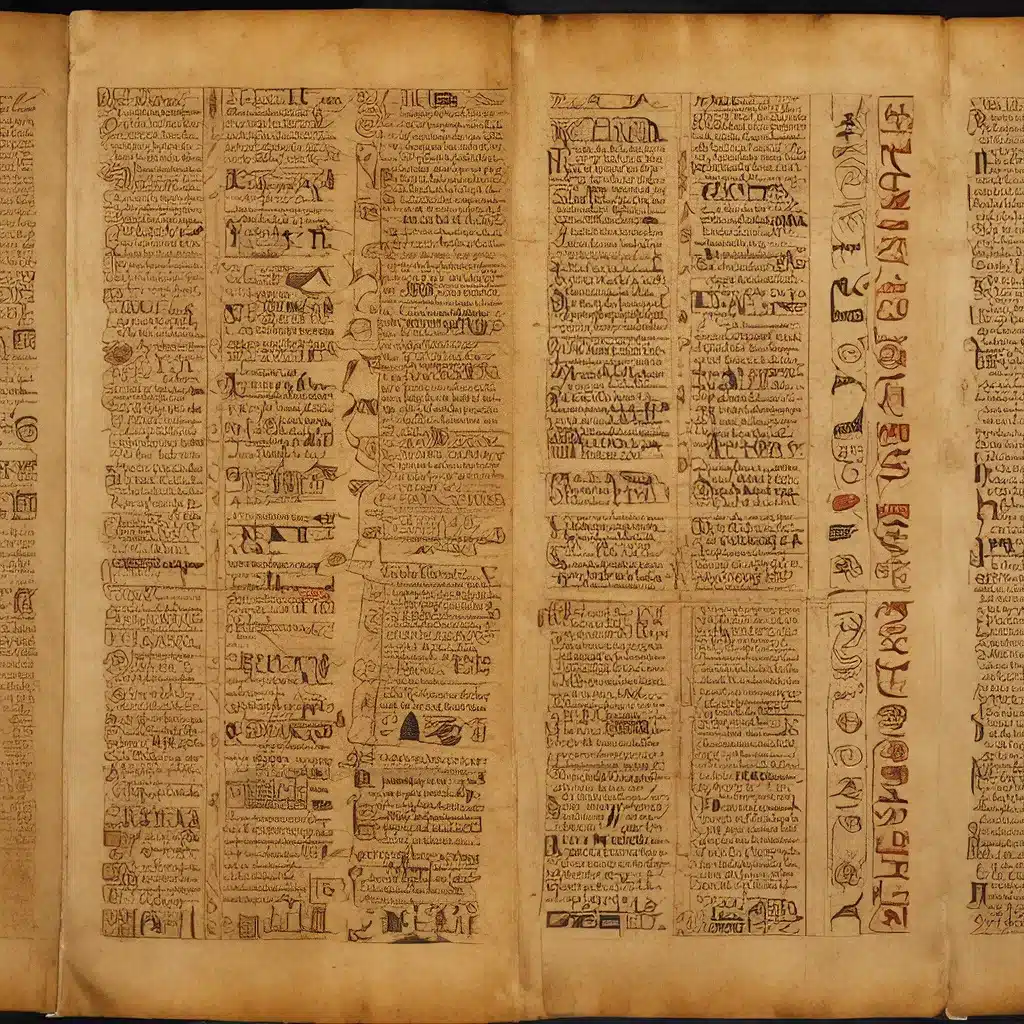
Piecing Together the Puzzle of Ancient Civilizations
The study of ancient civilizations has long captivated scholars, historians, and the public alike. From the enigmatic hieroglyphs of Egypt to the mysterious scripts of long-lost cultures, the decipherment of these ancient languages has been a crucial key to unlocking the secrets of the past. The Rosetta Stone, a remarkable artifact discovered in the early 19th century, stood as a crucial stepping stone in this journey of discovery.
The Rosetta Stone was found in 1799 by French soldiers during Napoleon’s invasion of Egypt. Inscribed with the same text in three different scripts – hieroglyphic, demotic, and Greek – the stone provided the crucial link that allowed scholars to decipher the long-lost Egyptian hieroglyphic language. This breakthrough, led by the brilliant Jean-François Champollion, ushered in a new era of Egyptology and the study of ancient civilizations.
However, the Rosetta Stone is but one example of the many ancient scripts and languages that have been rediscovered and decoded over the centuries. From the cuneiform writings of Mesopotamia to the Mayan glyphs of Central America, each decipherment has shed new light on the rich cultural heritage of these vanished societies.
Unlocking the Mysteries of Tunic’s Language
The recent release of the video game Tunic has captivated players with its own unique and intriguing language, harkening back to the challenges faced by early Egyptologists. Developed by Andrew Shouldice, Tunic follows the adventures of a small fox exploring a vast and mysterious world, uncovering the secrets of a long-lost civilization.
One of the game’s most compelling features is its in-game language, which players must decipher to progress through the story and uncover the game’s deeper meanings. Drawing inspiration from the Rosetta Stone, the Tunic language presents a similar challenge to players, requiring them to piece together the phonetic values of the symbols and gradually build an understanding of the text.
According to the information provided, the Tunic language is based on 44 English phonemes, with a few exceptions. The language uses a system of consonant and vowel symbols, with the outer lines representing vowels and the inner lines representing consonants.
One of the crucial insights shared by the community is that page 54 of the in-game guidebook is essential for deciphering the language. This page provides a visual reference for the Fox and Sword symbols, which serve as the foundation for understanding the language’s structure and phonetic values.
Applying the Lessons of History
The challenges faced by players in Tunic mirror the historical struggles of scholars who have dedicated their lives to unraveling the mysteries of ancient civilizations. Just as Champollion and his predecessors painstakingly pieced together the Rosetta Stone’s hieroglyphic inscriptions, Tunic players must engage in a similar process of linguistic archeology, carefully analyzing the game’s textual clues and symbols to decipher the underlying language.
This connection between the Tunic language and the decipherment of historical scripts highlights the enduring fascination with the power of language to unlock the secrets of the past. By engaging with these challenges, players not only enjoy the game’s narrative and gameplay but also gain a deeper appreciation for the rich tapestry of human history and the remarkable achievements of those who have dedicated themselves to uncovering the lost languages of ancient civilizations.
The Ongoing Pursuit of Knowledge
The Rosetta Stone’s impact on the field of Egyptology was transformative, paving the way for a better understanding of one of the world’s most enigmatic ancient cultures. Similarly, the Tunic language serves as a modern-day Rosetta Stone, challenging players to engage in the same kind of linguistic detective work that has fueled the study of long-lost scripts and languages throughout history.
As new archaeological discoveries continue to expand our knowledge of the past, the decipherment of ancient languages remains a critical component of understanding the cultural, social, and political dynamics of these vanished societies. From the Mayan glyphs of Mesoamerica to the Indus Valley script of the Indian subcontinent, each successful decipherment opens a window into the lives, beliefs, and achievements of our ancestors.
The The Lost Kingdoms blog is dedicated to exploring the rich tapestry of ancient civilizations, their languages, and the ongoing efforts to unravel their mysteries. Through in-depth analyses, case studies, and expert insights, we aim to inspire a greater appreciation for the enduring legacies of the past and the remarkable achievements of those who have dedicated themselves to uncovering the lost languages of antiquity.
Conclusion: The Power of Language in Unlocking the Past
The journey of deciphering ancient languages, from the hieroglyphs of Egypt to the scripts of Tunic, is a testament to the resilience of the human spirit and the thirst for knowledge. Each successful decipherment represents a hard-won victory, a testament to the dedication and ingenuity of scholars and enthusiasts who have refused to let the past remain forever shrouded in mystery.
As we continue to explore the rich cultural heritage of our ancestors, the study of ancient languages will remain a vital component of our understanding of the human experience. Through the painstaking work of linguistic archaeologists, the stories of long-lost civilizations will continue to emerge, shedding new light on the remarkable achievements and enduring legacies of those who came before us.


